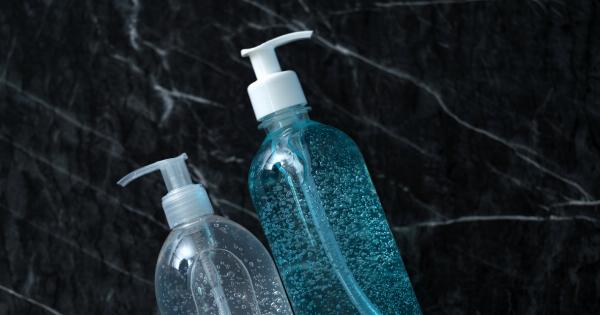Keeping our hands clean and free from harmful germs and bacteria is crucial for maintaining good personal hygiene and preventing the spread of illnesses. One effective way to achieve this is by using an antibacterial hand safeguard.
However, with a wide range of options available in the market, it can be challenging to pick the right one that suits your needs. In this article, we will explore the factors to consider when selecting an antibacterial hand safeguard and provide you with some helpful tips to make an informed decision.
Understanding Antibacterial Hand Safeguards
Antibacterial hand safeguards are products designed to kill or inhibit the growth of bacteria on the hands. They usually come in the form of soaps, gels, wipes, or sprays.
The active ingredients in these products are typically antimicrobial agents such as triclosan, chlorine, or alcohol-based substances like ethanol or isopropyl alcohol.
When used correctly, antibacterial hand safeguards can effectively reduce the number of bacteria on the hands, helping to prevent the spread of infections and diseases.
However, it is important to note that they are not effective against viruses, including the flu or common cold, which are caused by different types of microorganisms.
Factors to Consider when Choosing an Antibacterial Hand Safeguard
1. Active Ingredients
The first thing to look for when selecting an antibacterial hand safeguard is the active ingredient it contains. Different ingredients have varying effectiveness against specific types of bacteria.
Some common active ingredients found in these products include:.
- Triclosan: highly effective against many bacteria
- Chlorine: efficient in killing bacteria but may cause skin irritation for some individuals
- Alcohol-based substances: ethanol and isopropyl alcohol are highly effective in killing most bacteria
Consider your specific needs and preferences when choosing an active ingredient. If you have sensitive skin, for example, you may want to opt for products without chlorine.
2. Skin Type
The right antibacterial hand safeguard should not only be effective in killing bacteria but should also be gentle on your skin. Some products may contain harsh chemicals or fragrances that can cause dryness, irritation, or allergic reactions.
If you have sensitive skin, it is essential to choose a hand safeguard that is labeled as mild or suitable for sensitive skin.
3. Formulation
Antibacterial hand safeguards come in various formulations, including soaps, gels, wipes, and sprays. The choice of formulation depends on personal preference and convenience.
Soaps are effective at removing dirt and bacteria but may require water to rinse off. Gels, wipes, or sprays, on the other hand, can be more convenient for on-the-go use, as they do not require water.
4. Effectiveness
When selecting an antibacterial hand safeguard, it is crucial to choose one that has been proven to be effective through scientific studies.
Look for products that are approved by reputable regulatory agencies, such as the Food and Drug Administration (FDA) or the Centers for Disease Control and Prevention (CDC). These agencies ensure that the products meet specific safety and efficacy standards.
5. Cost
The cost of antibacterial hand safeguards can vary widely depending on the brand, formulation, and quantity. Consider your budget when selecting a hand safeguard and compare prices between different brands and sellers.
Keep in mind that the most expensive option is not necessarily the best and that some affordable products can also be highly effective.
Tips for Using Antibacterial Hand Safeguards Effectively
Using an antibacterial hand safeguard correctly is crucial to ensure its effectiveness. Follow these tips to make the most out of your hand safeguard:.
1. Wet your hands
Before applying the hand safeguard, wet your hands with clean, running water. This will help activate the antibacterial ingredients and facilitate lathering or spreading of the product.
2. Apply and lather
Dispense an appropriate amount of the hand safeguard onto your hands, and lather it thoroughly. Make sure to cover all surfaces, including the back of your hands, between your fingers, and under your nails.
Rub your hands together for at least 20 seconds to allow the antibacterial agents to work effectively.
3. Rinse off or let dry
If using a soap or gel, rinse your hands thoroughly with running water to remove the product and rinsed-off bacteria.
If using wipes or sprays, follow the instructions provided on the packaging, as they may require different steps or leave-on applications.
4. Dry your hands
After rinsing off the hand safeguard, dry your hands thoroughly using a clean towel or air dryer. Moisture can encourage bacterial growth, so it is important to ensure your hands are completely dry.
5. Use as needed
Antibacterial hand safeguards should be used whenever your hands may be exposed to bacteria, such as before eating, after using the restroom, or after touching potentially contaminated surfaces.
However, it is important to note that excessive use of antibacterial products can lead to dryness or skin irritation, so use them as needed without overdoing it.
The Bottom Line
Choosing the right antibacterial hand safeguard is crucial for maintaining personal hygiene and preventing the spread of harmful bacteria.
Consider the active ingredients, your skin type, the formulation, and the effectiveness of the product before making a purchase decision. Follow the tips for effective usage, and remember to supplement hand safeguarding with other preventive measures, such as regular handwashing with regular soap and water, maintaining a clean environment, and practicing good respiratory hygiene.




























